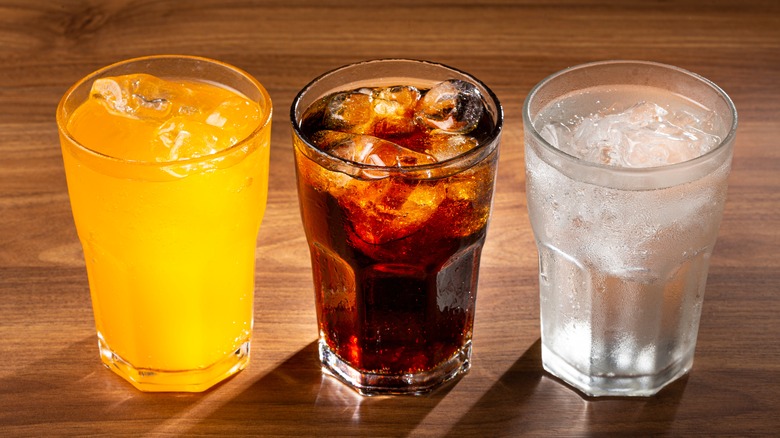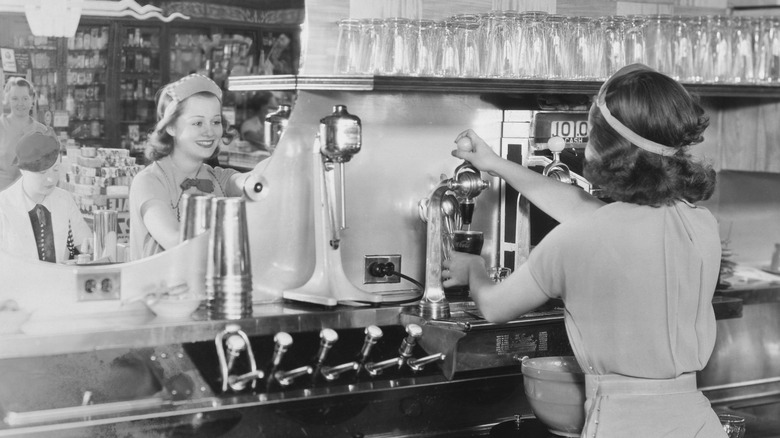Adding Flavor To Fizzy Drinks Started With 19th Century Pharmacists
Soda, or pop, is both a cherished American treat and one of the last things you might associate with medicine and pharmacies. While sweet, fizzy drinks are consumed everywhere, there is a special connection between soda and the U.S., where many of the most popular brands were born. According to Slate, as recently as the early 2010s, the United States drank more soda per capita than any other country, although The Harvard Gazette reports consumption of sugary drinks started to decline in the 21st century. Still, crisp bottles of pop and soda fountains endure as essential images of Americana, and brands like Coke, Pepsi, and Dr Pepper are some of the most recognizable U.S. products in the world.
Soda may be as American as the hamburgers it's often sold with, but it owes its existence to another beloved national tradition: selling people fake medical cures. You've probably heard the fun and crazy historical fact that Coca-Cola used to contain cocaine. What might be even crazier is that cocaine was included as a form of medicine. According to Popular Science, Coca-Cola was originally sold as a "nerve tonic" that helped relieve exhaustion and calm your emotions, with a bit of cocaine as the source of those dubious claims. But Coca-Cola wasn't alone. The entire soda industry, and all the creative flavors we associate with it, started in 19th-century pharmacies as a way to sell people medicine.
Pharmacists added flavor to carbonated medical tonics to make them taste better
Here's the thing about medicine: it just doesn't taste that great. According to Gizmodo, the association between pharmacies and sparkling drinks started with mineral water, which was already popular among spa-goers of the 1800s. To expand the market to more consumers, businessmen developed portable tanks of the stuff, which was dispensed via pressurized gas, in what became the first soda fountains. Given its reputation for health, enterprising pharmacists started adding ingredients to boost fizzy water's "healing" potential. This included things like tobacco, caffeine, phosphates, and, yes, cocaine.
While a lot of these flavors were not very palatable, drug stores did discover some that had pleasant sour or sweet flavors. Cook's Illustrated reports that pharmacists' access to a variety of synthetic chemicals taught them that many tasted good and could even mimic real-life flavors like raspberry and banana. Soon soda makers were experimenting with inventing new flavors, and pharmacies were making drinks that were as much for taste as for health. Eventually, in the early 20th century, new laws led to soda fountains dropping the drugs from their drinks, and Prohibition encouraged them to ditch their intoxicating image and move out of pharmacies entirely. But the flavor science they pioneered endured, with the number of recognized synthetic flavors now numbering in the thousands. Soda is now recognized as one of the least healthy things you can consume, but thanks to pharmacists, you can't deny they still taste great.

